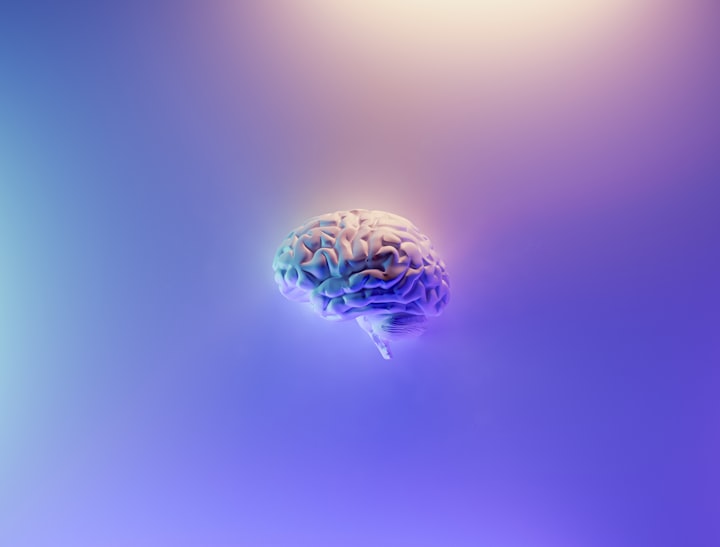10 Mind-Blowing Facts About the Human Brain
Brain facts and function

10 Mind-Blowing Facts About the Human Brain
The human brain is an incredibly complex and fascinating organ that holds numerous secrets waiting to be unraveled. With its intricate structure and astonishing capabilities, it continues to captivate scientists and researchers worldwide. In this article, we will delve into the depths of the human brain and explore ten mind-blowing facts that shed light on its wonders. From the building blocks of neurons to the intriguing world of dreams, the brain's influence on our lives is truly awe-inspiring.
1. The Brain's Complexity and Size
The human brain is an intricate masterpiece, consisting of billions of neurons interconnected through a vast network. It weighs approximately three pounds and is composed of different regions that govern various functions. Its convoluted surface, known as the cerebral cortex, is responsible for higher cognitive processes such as perception, memory, and decision-making. This intricate complexity allows our brain to carry out an incredible array of tasks.
2. Neurons: The Building Blocks of the Brain
At the core of the brain's structure are neurons, the fundamental building blocks of our nervous system. Neurons are specialized cells that transmit electrical and chemical signals, enabling communication within the brain and throughout the body. They consist of three main parts: the cell body, dendrites, and axons. Neurons work together in vast networks, forming the foundation of our brain's remarkable processing power.
2.1 Structure and Function of Neurons
Each neuron has a unique structure that facilitates its specific function. The cell body contains the nucleus and other essential organelles, while dendrites receive incoming signals from neighboring neurons. Axons, on the other hand, transmit signals to other neurons or target cells. Through this intricate web of connections, neurons process and transmit information, allowing us to perceive the world, think, and act.
3. Brain Hemispheres: Left and Right
The human brain is divided into two hemispheres: the left hemisphere and the right hemisphere. Although they work together, each hemisphere has distinct functions and characteristics. The left hemisphere is typically associated with logical thinking, language processing, and analytical reasoning. In contrast, the right hemisphere is more involved in creativity, spatial awareness, and emotional processing. This division of labor allows for a diverse range of cognitive abilities.
3.1 Specializations and Functions of the Hemispheres
While the hemispheres have their specialties, it's important to note that most cognitive tasks involve both sides of the brain working in harmony. For example, language processing is primarily handled by the left hemisphere, but the right hemisphere contributes to aspects like intonation and understanding context. Understanding the unique contributions of each hemisphere provides valuable insights into the brain's incredible versatility.
4. Brain Plasticity: The Brain's Ability to Change
One of the most remarkable features of the human brain is its ability to adapt and change throughout life. This phenomenon, known as brain plasticity or neuroplasticity, allows the brain to reorganize its structure and function in response to experiences, learning, and environmental factors. It enables us to learn new skills, recover from injuries, and even compensate for certain deficits.
4.1 Neural Plasticity in Different Stages of Life
Brain plasticity is especially prominent during early development, where the brain undergoes rapid growth and establishes crucial connections. However, plasticity continues throughout life, albeit to a lesser extent. Even in adulthood, the brain can form new connections, rewire existing ones, and adapt to new challenges. This flexibility highlights the brain's incredible capacity for change and adaptation.
5. Memory: The Brain's Information Storage System
Memories shape our identities and influence our interactions with the world. The brain's ability to encode, store, and retrieve information is truly extraordinary. Memories can be short-term or long-term, and they involve various brain regions working in harmony. The hippocampus, a structure deep within the brain, plays a crucial role in memory formation, while other regions handle specific aspects such as emotions tied to memories.
5.1 Different Types of Memory
Memory can be classified into different types, each serving a unique purpose. Working memory allows us to temporarily hold and manipulate information, while episodic memory helps us recall personal experiences. Procedural memory governs our motor skills and habits, while semantic memory stores general knowledge. Understanding the different memory systems deepens our appreciation for the intricate mechanisms underlying our ability to remember.
6. Dreams: The Brain's Mysterious World
Dreams have long fascinated and perplexed humanity. During sleep, our brains conjure vivid and sometimes bizarre experiences that seem to defy logic and physics. Scientists have proposed several theories to explain the purpose of dreams, ranging from memory consolidation to emotional regulation. Dreams offer a glimpse into the brain's capacity for creativity, imagination, and processing of emotions.
6.1 Theories and Functions of Dreams
One popular theory suggests that dreams play a role in consolidating memories and integrating newly acquired information into our existing knowledge framework. Dreams may also serve as a mechanism for emotional processing, allowing us to explore and resolve complex feelings in a safe and simulated environment. While the exact purpose of dreams remains elusive, they continue to be a subject of fascination and ongoing research.
7. Emotions: The Brain's Influencer
Emotions color our experiences and shape our responses to the world around us. Behind every emotional reaction lies a complex interplay of brain regions and neural pathways. The amygdala, for instance, plays a central role in processing emotions, especially fear and aggression. Other areas, such as the prefrontal cortex, help regulate and modulate emotional responses. Understanding the neural underpinnings of emotions enhances our comprehension of human behavior and mental well-being.
7.1 Brain Regions Involved in Emotional Processing
Emotional processing involves a network of brain regions, including the amygdala, hippocampus, and prefrontal cortex. The amygdala is responsible for initial emotional responses and the formation of emotional memories, while the hippocampus helps contextualize emotional experiences. The prefrontal cortex, with its executive functions, regulates emotions and aids in decision-making. These regions work in harmony to create the intricate tapestry of human emotions.
8. Language and Speech: The Brain's Communicative Skills
Language and speech are quintessential human traits that set us apart from other species. The brain's ability to comprehend, produce, and articulate language is a testament to its extraordinary capabilities. Multiple brain regions collaborate to facilitate language processing, including the Broca's area and Wernicke's area, which are associated with speech production and comprehension, respectively.
8.1 Brain Areas Responsible for Language Processing
The left hemisphere, particularly the dominant hemisphere, is primarily involved in language processing. The Broca's area, located in the frontal lobe, plays a crucial role in speech production and articulation. The Wernicke's area, situated in the temporal lobe, contributes to language comprehension. These areas are connected by a bundle of nerve fibers called the arcuate fasciculus, facilitating communication between them. The brain's linguistic abilities highlight its remarkable adaptability and capacity for communication.
9. Brain Disorders: When Things Go Wrong
While the brain is an incredible organ, it is not invincible. Various factors, such as genetic predisposition, trauma, or environmental influences, can lead to brain disorders. These conditions range from neurodegenerative diseases like Alzheimer's and Parkinson's to mental health disorders like depression and schizophrenia. Brain disorders can significantly impact an individual's quality of life, underscoring the importance of ongoing research and medical advancements.
9.1 Common Brain Disorders and Their Impact
Some common brain disorders include Alzheimer's disease, a progressive neurodegenerative condition that affects memory and cognitive function, and Parkinson's disease, characterized by motor symptoms such as tremors and stiffness. Mental health disorders like depression and anxiety are also prevalent and can profoundly impact emotional well-being. Understanding brain disorders helps us develop interventions and treatments that alleviate suffering and improve the lives of affected individuals.
10. Conclusion
The human brain remains an enigmatic marvel, constantly revealing new mysteries and astonishing capabilities. From the intricacies of neurons to the vast landscape of memory and the wonders of language, the brain's influence permeates every aspect of our lives. Its ability to adapt, process emotions, and generate dreams showcases its dynamic nature. While brain disorders pose significant challenges, ongoing research and advancements in neuroscience provide hope for improved interventions and treatments.
FAQs (Frequently Asked Questions)
1. Can the brain regenerate or repair itself?
The brain has a limited capacity for regeneration and repair. While some degree of neuroplasticity allows for the formation of new connections and adaptation, severe damage or neurodegenerative conditions can hinder the brain's ability to repair itself fully.
2. Are some people more prone to developing brain disorders?
Certain genetic and environmental factors can increase an individual's susceptibility to developing brain disorders. However, the exact interplay between genes and the environment in these conditions is complex and still under investigation.
3. How does stress affect the brain?
Prolonged or chronic stress can have detrimental effects on the brain, impacting memory, cognitive function, and emotional well-being. It can also contribute to the development or exacerbation of certain brain disorders.
4. Can brain training games improve cognitive function?
While brain training games and exercises can improve specific cognitive skills, their generalizability to overall cognitive function is still a topic of debate among researchers. Engaging in a variety of mentally stimulating activities and maintaining a healthy lifestyle are crucial for optimal brain health.
5. How can we protect our brain health as we age?
Maintaining a healthy lifestyle that includes regular exercise, a balanced diet, sufficient sleep, and cognitive engagement is essential for preserving brain health as we age. Additionally, staying socially connected and managing stress effectively contribute to overall well-being.
About the Creator
Abdullah
Bio: 🖋️ Writer | 📚 Student | 💡 Inspirer | 📈 Crypto Trader
I write fiction and real stories. And articles on personal development and money making.
Follow and support me to get my latest stories and articles.
Enjoyed the story? Support the Creator.
Subscribe for free to receive all their stories in your feed. You could also pledge your support or give them a one-off tip, letting them know you appreciate their work.






Comments
There are no comments for this story
Be the first to respond and start the conversation.